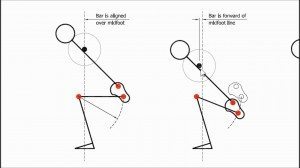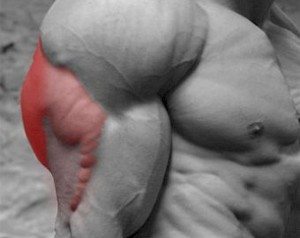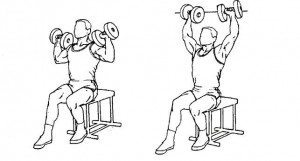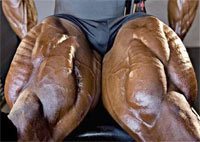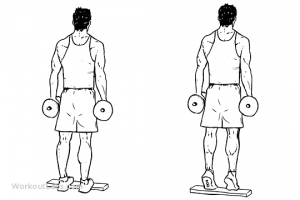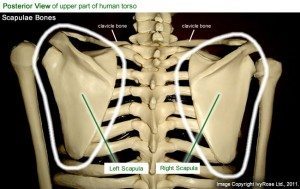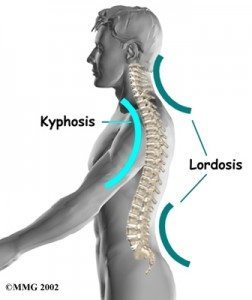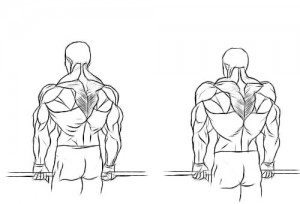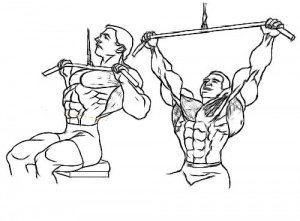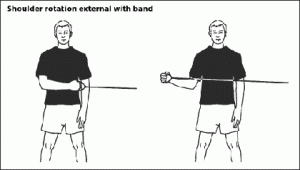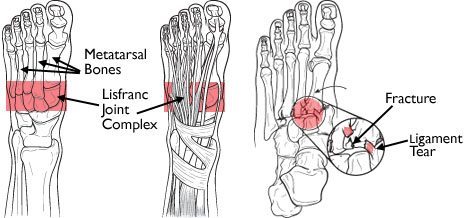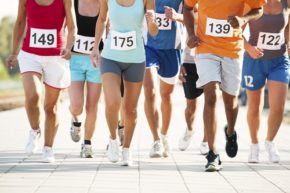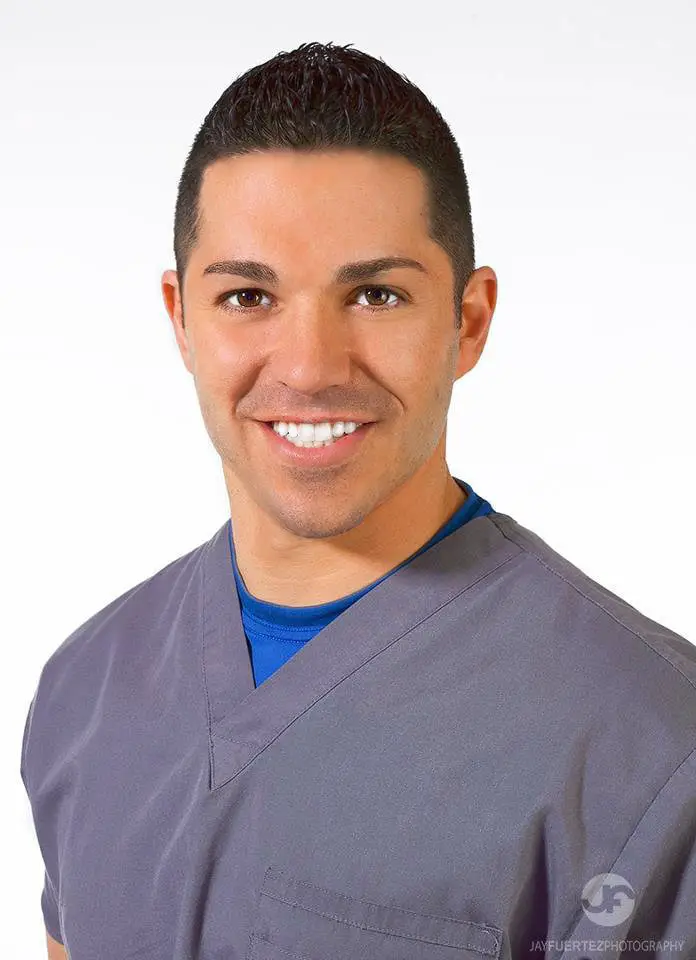This post may contain affiliate links to products or services which, if you purchase, may result in my earning commissions at no additional cost to you.
Social media has helped to promote many ideas, but one of the great ones is the online social presence of fitness. Many commonly agreed upon ideas at the gym are based on sound science, but many, including form and bio-mechanics are what we call “broscience”. Much of this persists to this day as trickle-down from the golden age of bodybuilding in the 70s, before we had advanced imaging, and computers to track maximal muscle contraction.
Here are 10 common gym mistakes that people are making. If you can correct these 10 things on the list, you will see the gains and changes that you are looking for!
1. Squat below parallel (the top of your thigh)
The common adage in the gym is the “ass to grass” mentality. However when we look at what muscles are active in specific positions, the hamstring and quadriceps groups are eccentrically loaded during the negative phase of the squat.
The quadriceps group has two functions, hip flexion and knee extension, so when you move the pelvis below 90 degrees, the knee extension part of your quadriceps is mechanically turned off. This causes the hip flexor to dramatically pull us out of the “hole” and then we use momentum to finish the lift.
The same principle applies to “bouncing” at the bottom of the movement. Your hip joint and hip flexors end up taking the majority of the physical load, which stops your lower quadriceps and glutes from growing the way that they should. When you stop at 90 degrees (top of the thigh) your gluteus maximus must engage greatly, because it’s job is to extend the hip and leg. Neither the glutes nor the lower quads can be engaged when the position of the pelvis is too low during the lift.
Check out some great Squat Racks that help with form
2. Shortening range of motion during tricep push downs
Most folks in the gym attempt to hold their elbows in one position at 90 degrees to work on their triceps. What we have to remember is that the tricep has 3 heads, the largest of which is the long head which crosses both the elbow and shoulder. Because of this length, this muscle group also extends the shoulder, not just the elbow.
Because of this principle, to get the most work done, the elbows must move vertically at the top of the motion, so that we can get the tricep to not only extend the elbow, but the shoulder as well. The hands should come up towards the nose and extend just shy of full extension. When you extend all the way, you take the pressure off of the muscle and put it onto the joint. The long head is the largest of the 3 heads, and if you work this muscle, you will see dramatic increases in total arm size!
3. Starting from shoulder height during shoulder presses
The deltoid’s job is to abduct (raise the arm laterally overhead), extend, and flex the arm. The combination of these three motions is the common military press or overhead press motion. Starting at the shoulder height allows the shoulders to rest and decreases the amount of stress that can be placed on the muscle, limiting growth. If you start to perform your shoulders presses, from the active position as your rest position, you will see big gains in your shoulders!
4. Leaning the seat back during leg extensions
Once again, most people are not trying to develop big hip flexors, but instead, are looking for the lower 3 heads of the quadriceps to grow around the top of the knee. When the seat is leaned back, the hip flexors are engaged, and this not only makes it more difficult to activate the lower part or knee extensor part of the quadricep, it puts excessive force vertically on the knee cap and compresses it into the knee. This causes pain and cartilage damage.
If we pull the seat all the way forward, we take the hip flexors ability to contract out of the equation, and make the lower quads work much harder. This, with the combination of stopping just shy of full lockout, will protect your knee and allow your quads to grow!
5. Doing calf raises from a seated position
The calf muscles or gastrocnemius’ main function is to plantar flex (or point the toes down) but because it crosses both the ankle and knee, it is also a flexor of the knee (brings the foot towards the glutes). Due to this fact, if you elongate the muscle completely, you allow the muscle to generate the most possible power, and this in turn leads to growth.
When the knee is bent during seated calf raises, the gastrocnemius is “turned off” forcing the soleus muscle and other ankle muscles to perform the work.
This is a problem because the soleus is a slow twitch muscle, meaning that it does not respond favorably to weight lifting activities, it activates during aerobic type exercises such as jogging and walking for long duration.
6. Allowing you shoulder blades to move apart during upper body lifts
Holding the shoulder blades locked together not only protects the back and shoulders, but it allows the muscles that move our arms to contract from the longest possible position.
Allowing the shoulder blades to separate puts the lifter at risk of shoulder, neck, and back pain. This is particularly important with chest and shoulder exercises and slightly less important during upper back workouts.
7. Losing the Lordosis in your spine during lower body lifts
The curve in your lower back is shaped like a reverse C and is called a lordosis. This curve is similar to the arcs that are used for stability in architecture and allows a symmetric transfer of force along the lower back from the spine to the pelvis. This position holds the discs in a favorable position allows you to move your pelvis backwards during leg presses, squats, and dead lifts.
When the pelvis moves backwards, it allows the glutes to contract to bring the pelvis back to the center during the end phase of the exercise. When we lose the lordosis of the spine we “turn off” the glutes and quads, and force excessive physical strain on the lower back muscles and discs. This will eventually lead to injury and will also slow your gains with your leg muscles.
8. Rolling your shoulders during shoulder shrugs
Often times, you will see people in the gym rolling the shoulders either forward or backwards during shoulder shrugs. This is a simple rule. The trapezius should move the shoulders up towards the ears during a shrug.
The trapezius also retracts the shoulder blade (pull back) depresses (lowers), and to some extent rotates the scapula. This is not true when weights are being held in the hand at waist level. The only action that can be created from this position is the pure shrug motion. By rolling the shoulders with weights in your hands, not only does this cause us to put strain on the shoulder capsule and potentially damage it, it limits our growth in the trap muscles!
9. Pulling the bar too far down during lat pulldowns.
The lat pull machine is a great machine for growing your latissimus dorsi. A common mistake I see is when weightlifters bring their hands below shoulder height during this exercises.
There is a “Sweet spot” that allows maximal contraction of the lat muscle. When the hands come below the shoulders, the lat muscles loses it’s ability to contract, and we begin to use our deltoids and triceps to finish the muscle. To keep maximal stress on the latissimus dorsi, the arms should stretch to a full stretch at the top of the muscles but the hands need to stop at roughly the shoulder height so as not to take tension of the of the muscle we are aiming to work. By keeping the hands at shoulder height, you will maximize gains in the back muscles!
10. Performing external rotation rotator cuff exercises with free weights
When performing external rotations, we are attempting to strengthen and activate the rotator cuff (particularly the infraspinatus and teres minor muscles).
Because of the lines of gravity, external rotation with weights in the hand actually activates the deltoid and trapezius in an attempt to try to hold the shoulder in a stable position. With a cable machine, or a theraband, the force is applied at 90 degrees which allows stress to be applied in pure external rotation.
This allows the rotator cuff muscles to reach maximal contraction. The exception to this, would be if you laid on your side with the top hand holding a weight and performed external rotations in line with gravity.
Just say no to standing “rotator cuff” exercises with dumbbells!
Apply these mechanical changes to your exercise routine and you will be well on your way to more gain!
Disclaimer: This article is for educational purposes only. If you have a medical condition, it is prudent that you seek medical evaluation by a properly qualified and licensed practitioner.
Fitness Star Lais Deleon

